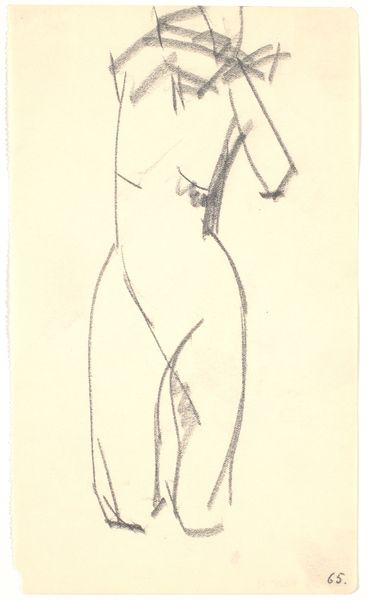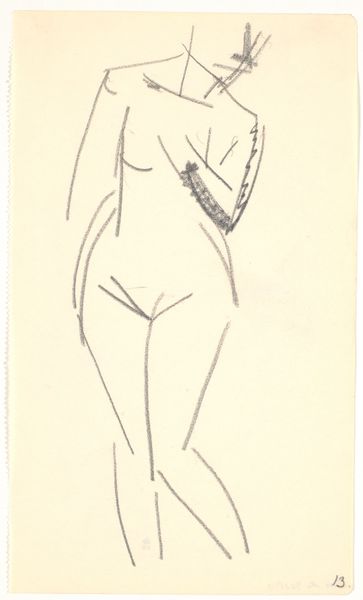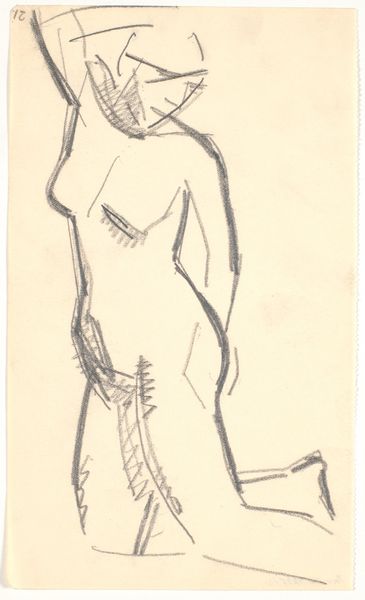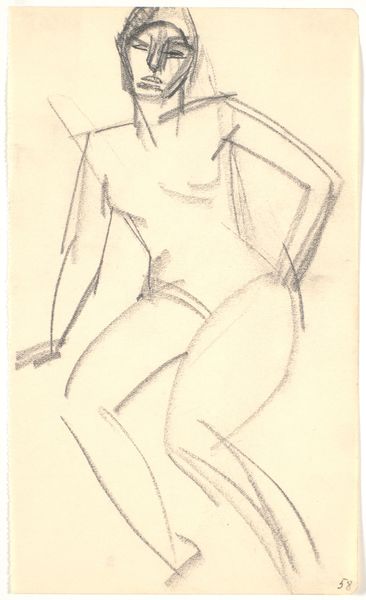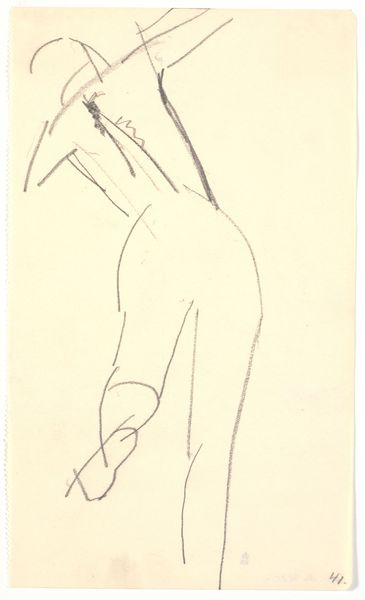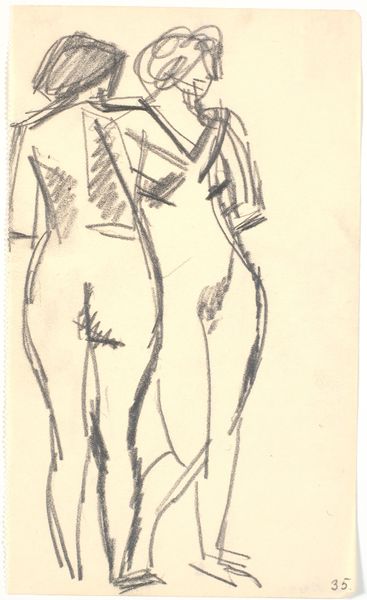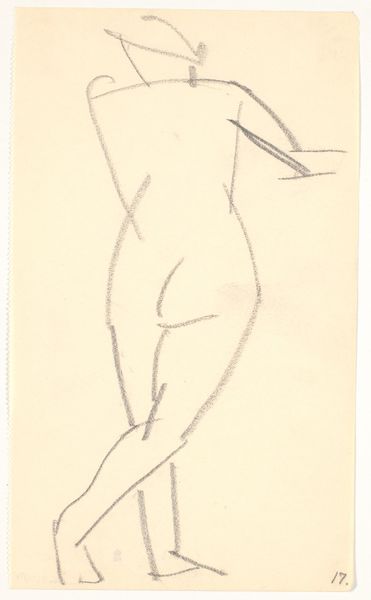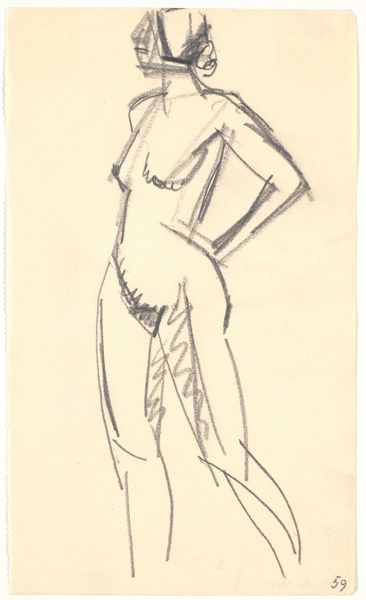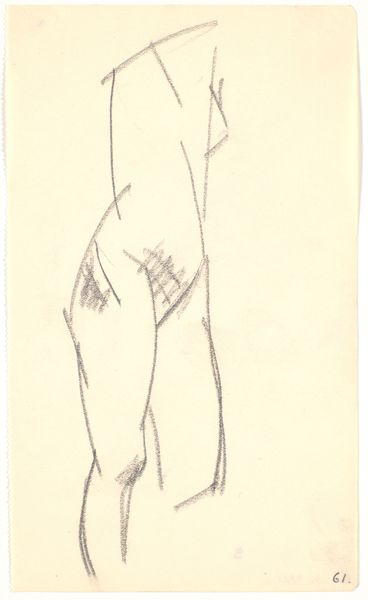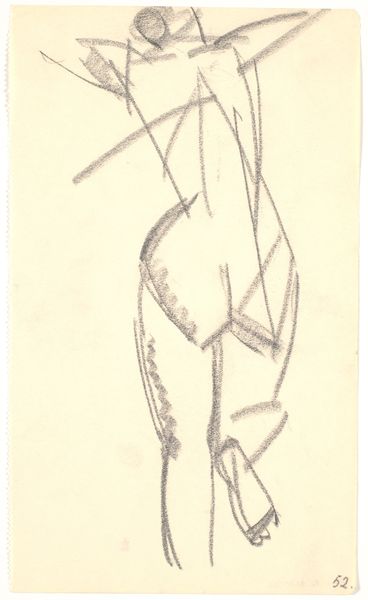
drawing, graphite
#
drawing
#
graphite
#
nude
Dimensions: 209 mm (height) x 124 mm (width) (bladmaal)
Curator: Here we have Karl Isakson’s "To stående modeller," or "Two Standing Models," rendered in graphite around 1914-1915. It's currently held in the collection of the SMK, the National Gallery of Denmark. Editor: The simplicity is startling, isn’t it? Two figures, backs turned, seemingly emerging from the very paper itself. Raw, almost hesitant lines, yet confident in their economy. You can almost feel the artist’s hand moving quickly. Curator: Exactly! Isakson uses a minimum of strokes to convey form, and it speaks volumes about his understanding of anatomy. There’s a clear fascination with the abstracting of form while still hinting at sensuality. What intrigues me is how contemporary production operates; does that speed also show the commodification of the art object? Editor: It's interesting that you highlight materiality. Consider how Isakson’s process invites the viewer into a kind of shared experience of labor: the rapid lines as if made from charcoal show movement that mirrors the industrial assembly lines being conceptualized at the same time. Is there an implicit political element in this work of claiming not only the body as seen, but also made? Curator: I think that’s insightful! While on one level the graphite provides almost ephemeral lightness, he uses it to ground these women – these figures become architectural. Their shoulders and hips are simplified to almost geometric forms, yet they avoid being fully flattened. They become figures holding a landscape within them. Editor: True. The lack of clear facial features reinforces this sense. It brings to mind the debate over art as both labor and production, how quickly, thanks to industrial innovation, artwork was consumed rather than lived in, rather than being used by its viewer. What happens to how art affects the subject when these artworks are merely made, bought, and used as decoration? Curator: And maybe that returns to what I loved so much originally. It leaves so much open! One could imagine them gazing out at a turbulent sea, or simply waiting. They invite quiet contemplation in a loud and frenetic age, demanding we consider not what art costs but what its inherent material reality shows about a shared system of production. Editor: Ultimately, Isakson’s work demonstrates the inherent contradictions within the artist’s creative act itself; we're stuck on an eternal teeter-totter where we ask whether an artwork is made to be valued or consumed.
Comments
No comments
Be the first to comment and join the conversation on the ultimate creative platform.
